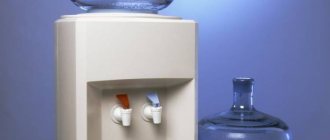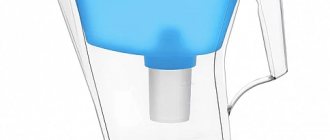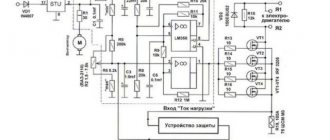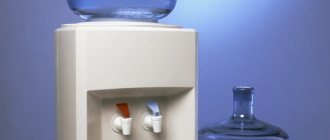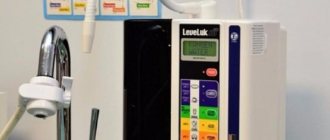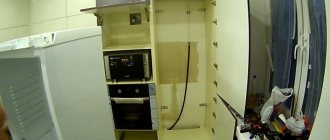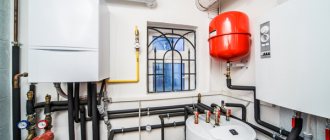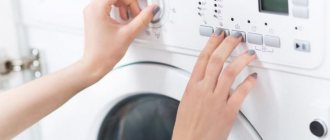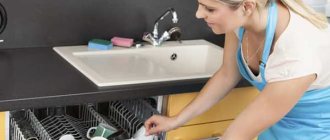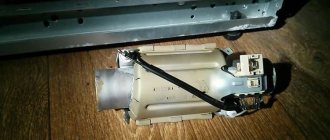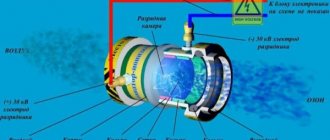How to disassemble a water cooler
The algorithm for disassembling dispensers is as follows:
- Use a figured screwdriver to unscrew the screws.
- The back cover is removed.
- The device is inspected internally to determine if there is a malfunction.
- If the water heats up weakly, inspect the metal tank with hot water (at the very top of the device) for scale deposits. To do this, first unscrew the drain plugs located at the bottom of the tank, at the back, so that the tank is free of water. There may be two traffic jams, but there may also be one.
- Using a small curly screwdriver, unscrew the 4 screws under the seal.
- Next, use wrench No. 15 to remove the rubber seals.
- Using pliers, cut off the clamps from the pipe and other connecting pipes.
- Electrical and grounding wires are disconnected after unscrewing the screws.
- The temperature sensor is disconnected from the tank.
- The tank is removed.
- The condition of the thermal paste is checked and, if necessary, applied in a thin layer.
- If there is a fiberglass insulation coating, it is removed, after which the tank is cleaned inside.
- If the heating tank is in order, inspect other components and connections.
Technical characteristics of coolers
The leading characteristics by which dispensers are selected are as follows:
- Power spent on cooling and heating water;
- Heat treatment speed;
- Technology used in cooling;
- Maximum heating and cooling temperature (optimum: +40C for cold water and +980C for hot water);
- Availability of temperature controller;
- Method of installing a water tank;
- Device size;
- Filtration method (preferably multi-stage purification);
- Availability of a disinfecting ultraviolet lamp (important for children's institutions);
- Additional functions: automatic on/off timer, dosing, child lock.
Diagram describing the operation of a flow cooler
In flow-through devices, water is taken not from bottles, but from a water supply. In this regard, such devices are equipped with a water filtration and purification system. It works in the same way as home filters installed under sinks in kitchens. If children drink water from flow coolers, then ultraviolet lamps are installed to treat it antiseptically. UV irradiation kills all microorganisms, incl. viruses.
Next, the internal structure of a tankless cooler is a water distribution system, which *consists* of a common *water tank*, followed by separate tanks for chilled and hot water.
The “cold” tank is located above the “hot” one, and between them there is a check valve that prevents the mixing of chilled and hot water. Both tanks are wrapped in thermal casings. Thanks to them, the temperature is maintained so effectively that without disassembling the water, the heater or cooler is turned on for a few seconds every half hour.
Flow coolers require disconnection from the electrical network if they are left unused for a long time.
General operating principle of a water cooler
According to the design, a water cooler consists of a housing in which a bottle of water is placed. Inside the housing there is a water distribution system and tanks for cold and hot water.
- Popular cooler models are equipped with separate taps for cold and hot water.
- There are coolers with one tap, equipped with a joystick-type design that separates cold and hot water.
- There are models with three taps for hot, cold and warm (about room temperature) water.
In addition, models are available with a separate block for producing sparkling water.
The physical principle of operation of a water cooler is quite simple. From the bottle, water flows into a distribution system consisting of a cold water tank. Then, through the connecting pipe it enters the hot water tank.
Between the tanks there is a check valve that balances the pressure in the system. This prevents cold water from mixing with hot water.
Regardless of the manufacturer, the functions of all models are almost the same. The cases, or so-called form factors, also differ little. Based on the installation method, coolers are divided into two types:
- desktop;
- floor
The cooler body can be made of plastic or metal. Ceramic models are also available.
The color of the cooler body can be very different. Most often white or gray. However, if you wish, it is easy to find and buy a color version or even with various inserts.
Floor cooler
The floor type cooler is a classic option. As a rule, the operating principle of such models is automatic mode. The color of the indicator on the front panel of the case informs about the nature of the operation. It is possible to disable heating or cooling options. It is recommended to disconnect the floor cooler from the power supply only in cases where a long break in its operation is planned. Typically, the cost of floor-standing models is higher than the prices of desktop options. But they are much more powerful and more functional.
There are models with refrigeration compartments or ozonation chambers built into the body to disinfect dishes.
Desk cooler
The desktop type is more compact. Its design, operating principle and water cooling parameters are similar to the floor version. The owner of such a cooler must have a suitable table at his disposal on which he plans to install the device.
Flow dispensers
The operating principle of a flow-type water cooler is somewhat different. Water comes into it not from removable bottles, but from the water supply network. It is equipped with a built-in cleaning system, which is similar in principle to home filters installed under the kitchen sink. Some models are additionally equipped with ultraviolet lamps designed to destroy harmful microorganisms. The principle of operation of a flow-type water cooler frees you from purchasing bottled water, since it uses water from the water supply system.
Scheme of operation of a cooler with flow cooling
All flow coolers (purifiers) have water heating and cooling systems. But running water from the tap first goes through a filtration system. Its throughput is up to 2 liters per minute. The resource of cartridges (filters) is up to 12 tons of water. During average use of the device, cartridges need to be changed every six months.
Next, the filtered water enters a storage tank, from which it is distributed into a heated and cooled tank. Those. After filtration, the purifier’s operating scheme is the same as that of a conventional cooler with heating and cooling.
Cooler with bottom loading bottle - how to choose?
Bottom loading cooler - beautiful, stylish, convenient
In this article, we will analyze in detail how different coolers differ from each other, why we recommend giving preference to a bottom-loading cooler, talk about new products on the market, and compile the top 5 closed coolers.
How does a bottom-loading cooler work?
This is a water dispenser with heating and cooling, which has already become familiar to the Russian consumer, with one significant difference - a 19-liter bottle of water is not installed on top, but is hidden in a special compartment at the bottom of the device. If in a conventional top-loading cooler water entered the device by gravity under the influence of gravity, in a bottom-loading device water is supplied to the device using a pump. That is why such devices do not gurgle, and the pump operates almost silently. Thanks to loading the bottle inside, such models are more compact, which means they require less space and fit more easily into the interior.
Another advantage of installing the bottle from the bottom is the natural protection against leaks. The fact is that when the bottle is installed on top, exactly as much water flows into the cooler as you poured. If a microcrack forms in the bottle, the vacuum plug will be broken and a leak will form. Unfortunately, bottles crack in the cold, fall, are not transported and stored carefully, so anyone can receive a defective bottle and suddenly find a puddle under the cooler; this is not that uncommon. Moreover, the water supplier will replace the broken bottle without hesitation, but you will still have to eliminate the consequences of the flood. In a cooler with bottom water supply
such a disaster will never happen, since the water is supplied by a pump and complete tightness is not required.
All coolers are bottom loading
equipped with heating and cooling. Water supply is carried out using 3 keys (cold water, hot and room water) or touch buttons. The distribution can be carried out either through one tap or through three. More expensive models are complemented by a roll-out shelf for installing a bottle, lighting in the water distribution area, an electric kettle, and an ozonation function.
How to choose a water cooler for the office
In the summer of 2021, the Ministry of Labor published letter N 15-2 / OOG-2247 “On work related to lifting and moving heavy objects.” It declares the maximum weight allowed for female employees to lift and carry without harm to health. So girls are prohibited from carrying loads heavier than 10 kilograms and lifting heavier than 15 kilograms. I think you understand where we're going with this. If you are choosing a cooler for a hotel, where it will be served by maids, or you have a female team, you simply have no choice. To comply with labor standards, you will have to give preference to a bottom-loading cooler.
Which water cooler is better to buy for home?
Typically, household appliances are purchased for a long time and are selected especially carefully. I really want to choose the right one so that I don’t regret it later. And here's why you will never regret buying a bottom-loading cooler:
- It's easy to use. Your fragile and delicate other half will be able to replace the bottle at any time, because you don’t need to lift it, you just need to install it on the pallet. By the way, an interesting fact: to install a bottle in a regular cooler, you need to not only lift it, but also forcefully lower it onto the pin of the bottle receptacle in order to break through the plastic protective plug. Practice shows that while some girls are able to cope with the lifting, only a few succeed in the installation.
- He is very stable. This fact is quite simple to explain, the cooler itself is not very heavy, compressor models weigh 15-18 kilograms, electronic ones even less - about 10 kilograms. It turns out that a full bottle weighs either the same or 2 times more than the dispenser. Obviously, installing the bottle at the bottom significantly increases the stability of the device. From the point of view of home use, this means that it is almost impossible to knock over such a device or tip it over yourself, and this is exactly what small children love to do.
- He's stylish. Indeed, due to the fact that bottom-loading coolers are a little more expensive and fall into the premium segment, manufacturers make them much nicer than their counterparts. A wide variety of colors, beautiful rich high-quality painting, glossy surfaces made of excellent plastic, smooth steel inserts - that’s what distinguishes them. Some models are equipped with additional lighting, making them look exceptionally beautiful in twilight and darkness.
- He is smart or very smart. Again, thanks to the higher price segment, the manufacturer was able to add a large number of sensors and fuses to the device. Firstly, since the bottle is hidden from view, there is always a water level sensor on the front panel of the device. If the water runs out, the empty bottle indicator will light up and a sound signal will sound. The anti-scald or child lock key will prevent the key or hot water tap from being pressed spontaneously. Many models are equipped with a multifunctional monitor or display that allows you to set the operating modes of the device at different times of the day.
Cooler compressor or electronic
Which type of cooling is better to choose? Many buyers ask this question, we will try to understand this issue.
- The electronic cooling cooler
works thanks to a Peltier element. If you have already forgotten a little about your school physics course, let us remind you that the flow of electric current through the contact of two materials with different levels of conductivity leads to a temperature difference. As a result, one part of the contacts heats up, the other cools. The advantages of this method are low price, compact size and lack of noise during operation, the most important disadvantage is rather low efficiency.
- A compressor-cooled cooler
works like a refrigerator or air conditioner. The compressor circulates the refrigerant. All coolers use safe R134a freon. It is non-toxic, made without the use of chlorine and is non-flammable. The advantages of compressor cooling are obvious: low cooling temperature and high performance. But there are also tangible disadvantages - high price, noisy operation, heavy weight, low risk of freon leakage.
Now let's move from theory to practice and compare what the difference is:
| Cooling type | Compressor | Electronic |
| Water output per hour | 2 liters (10 cups) | 0.6 -1 liter (3-5 cups) |
| Cold water temperature | From 8 to 10ºС, the water will be cold | In the range from 12 to 15ºС, the water will be cool |
| Temperature of tap water at room temperature | Colder than room temperature | Warmer than room temperature |
| Price | 2,500 - 5,000 rubles more expensive than the electronic analogue | |
| Installation location | Afraid of large accumulations of dust | |
| Transportation and installation | Storage and transportation only in vertical condition. Requires at least 6 hours of waiting before first use |
The choice of cooling type greatly depends on the region of operation. Due to the design features of the Peltier element, a cooler with electronic cooling does not cool water to a certain temperature, but makes it colder by 12 to 15ºС relative to the ambient temperature. This is why you can safely save money if you plan to use a bottom-loading cooler with electronic cooling in Moscow
or St. Petersburg, because even on the hottest days, when the temperature exceeds 30 degrees, you can drink cool water. And nature doesn’t spoil us with such gorgeous weather every summer. If you are choosing a dispenser for the southern regions, spare no expense on a model with compressor cooling.
How to change a bottle in a cooler
Indeed, this is a good question. Here is a water cooler, a bottle below, everything is new and unclear. Follow these instructions and the procedure will take you no more than two minutes:
1. Make sure the device is turned off. The heating and cooling switches are set to OFF or OFF. If you see the symbols I and 0 on the keys, remember that I (similar to 1) means on, and 0 means off.
2. Open the cabinet door. Remove the empty bottle. Remove the siphon from the bottle and attach it to the siphon holder.
3. Now take a new bottle. Remove the protective film and plastic cover from its neck.
4. Lower the siphon tube into the bottle. Place the siphon clamp onto the neck until it clicks. Then lower the top of the siphon cap until the tube touches the bottom of the bottle.
5. Place the bottle back in the cabinet. WARNING: Make sure the unit is plugged in but the heating and cooling are turned off. After installing the bottle, the pump will begin to fill the dispenser reservoirs. This will take 15 to 20 minutes. Make sure the tanks are full by draining a small amount of water from the cold and hot taps. After this, you can turn on heating and cooling. Remember, operating the device in heating mode without water leads to the hot water tank burning out, which is not a warranty case and requires expensive repairs.
If you still have questions about replacing the bottle in a bottom-loading cooler, watch this video:
Rating of water coolers with bottom loading bottles
Our rating opens with the VATTEN L45
. If you are determined to buy the cheapest bottom loading cooler, this is what you need. Electronic cooling, available in three colors - black, white and silver. Three taps for dispensing water, protection against accidental pressing, and, what’s nice, a two-year warranty from the manufacturer.
If you are not chasing a brand and are looking for a cheap bottom-loading cooler with compressor cooling, pay attention to the Ecocenter models. A reliable option at a great price.
The best among electronic cooling models HotFrost 35AEN
and
Ecotronic M9-LXE
. Both are made in a black body with steel inserts and a single water dispensing tap.
In the range from 16 to 25 thousand rubles, a whole constellation of coolers with compressor cooling is presented. These models are complemented by light illumination of the water distribution area and a shelf for a bottle. The HotFrost 45A red model is especially eye-catching
. The bright lacquer paint in a noble red color will fit perfectly into the most daring interior.
I would like to draw your attention to several more premium models. LC-AEL-770A black
— cooler with touch control.
If you are a fan of high technology, this option is for you. Ecotronic C11-LXPM
- made entirely of stainless steel and equipped with a multifunctional monitor.
The screen displays the clock, hot and cold water temperature, and water level in the bottle. The black and gold HotFrost 350ANET gold
with a built-in electric kettle looks very interesting. This model is for those who like to brew tea and coffee with boiling water.
I would like to pay special attention to the new product for 2021 from Vatten. Model VATTEN L50REAT TEA BAR
– This is a convenient and compact table for tea drinking, with a cooler function.
The cooler package includes two kettles with different functions, one of which is intended directly for brewing tea, the second for boiling water. It is also convenient that the boiling mode itself is selected by simply double pressing the heating button, which in turn saves the user from additional manipulations. Ease of use is a feature of this cooler. And despite the electronic control, any user can easily understand it. The device is equipped with a built-in display that allows you to find out data about the water temperature, and when it cools down, the user can simply turn on the heating.
Despite the fact that VATTEN L49QEAT TEA BAR
has a unique design for a tea table, it also retains its main function as a cooler. Water here is supplied through a single common tap, and by pressing the appropriate button you can simply get chilled water, bypassing the process of brewing tea. Everything is simple and at the same time brilliant. This is a bottom loading water cooler. The water bottle is installed directly below the cooler, in a special closed compartment. Coolers with a bottom bottle arrangement are good because they free the user from additional stress on the back, which is highly undesirable for older people and back problems.
Having a compact shape and a closed loading type, this cooler will fit perfectly into any room, while maintaining a touch of homeliness and comfort.
Another feature of the model is a built-in cabinet for storing various types of tea accessories. The cabinet itself is not large, but it can easily store tea, sugar, coffee and small dishes, and its harmonious location, immediately under the teapots, adds an element of home comfort to the entire overall design, reminiscent of its compactness as part of the kitchen. The model is available in red and gold colors with compressor and electronic cooling.
How to Clean a Water Cooler
To make your cooler last longer, you need to follow a few simple rules:
1. Once a quarter, wipe the device from dust with a soft sponge or rag without using abrasive or caustic agents. Don't forget to flush the top of the water supply taps.
2. Take out and wash the drip tray, because tea or coffee residues often accumulate in it, especially if one of the employees poured himself a heaping cup or simply threw out the remnants of the previous drink.
3. Once a year, wipe the radiator grille and vacuum the cooler grille if you have an electronic cooling unit installed. It is especially important to follow this rule if a lot of dust accumulates in the room.
4. Do not forget to move the device away from time to time and wipe the floor underneath it.
5. Be sure to sanitize the cooler at least once every 2 years. Please note that the complex design of bottom-loading coolers requires a good understanding of the device and disassembling the case for comprehensive maintenance. We recommend that you contact specialists.
Cooler sanitization consists of
consists of several stages: first, the device is treated with special preparations, then washed with clean drinking water. Additionally, you can order descaling treatment for your cooler (if necessary). It is recommended to carry out such treatment at least once a year.
| List of works: — collection of the cooler from the customer; — provision of a replacement cooler; — fault diagnosis; — preventive cleaning of equipment; — return of the cooler to the client. | Order service |
What else do you need to know about the cooler?
A few more tips and interesting facts that will help you use the device correctly:
- The temperature in the room should not fall below 0 °C. Pay special attention to preparing the cooler for the storage period, if necessary. Carefully follow the recommendations in the instructions for the device, make sure that all water is drained from the internal tanks. Otherwise, frozen water leads to rupture of the cold water tank and the need for its subsequent replacement.
- You must understand that the water from the bottle is supplied by an electric pump. Therefore, a bottom-loading cooler is not designed to operate without an electrical connection.
- Low-quality bottled water or the use of tap water will quickly damage your dispenser, as it contributes to the formation of deposits on the heating elements of the device.
- Due to the special shape of the 19-liter bottle, if the siphon tube is not installed carefully, the device can signal that there is no water, although there is still 200-300 milliliters left in the bottle. This is normal and should not cause you concern.
- If the device is noisy, it is most likely installed crookedly. Place the device on a flat surface or use the height adjustment.
- The most common reason why the pump does not pump water is incorrect installation of the bottle. Make sure the siphon cap is firmly placed on the neck of the bottle and try again.
- Remember that coolers with compressor cooling can only be transported and operated in a vertical position.
- Never operate heating and cooling without the bottle or immediately after installing it. Be sure to check that the internal reservoirs are full by draining a small amount of water through the faucet.
Accessories for coolers
It will be more convenient for you to use a cooler with a bottom loading bottle
if you buy a couple of useful accessories with it. Firstly, there is a handle for carrying the bottle. Carrying a bottle by the neck, especially in winter, is extremely inconvenient. Your hands get cold, the plastic is slippery, and the bottle weighs a lot, and dropping the bottle is strongly not recommended. The lightweight, comfortable handle will make your life much easier. Secondly, the glass holder. Especially if you have a lot of guests in your office and you use disposable cups. Taking them out of the bag is extremely inconvenient; they are scattered everywhere or fall all the time. A cup holder will solve this problem once and for all. Please note that there are models with screws that can be hung on the wall, and models with a magnet that are attached directly to the cooler. And finally, water storage racks. Office and warehouse space is the second cost item in business after salary. Therefore, compact storage of water bottles not only organizes space and adds order, but also significantly saves your money.
Operating principle description and diagrams
The cost of tap water (from a city system, an independent well or a local well) is much lower than that of bottled water, which allows for significant savings. In addition, running water is always available, without interruptions, this is a significant plus if a large number of people actively use the cooler. In order for water to flow into the purifier in a continuous stream, a polypropylene tube 6 mm in diameter is connected to the water supply through a tee with a tap.
Through this tube, water enters the cooler and passes through filters (replaceable cartridges of the same size). Next it is sent to the standard water distribution scheme.
At the outlet of a flow cooler, like a regular one, there are two taps: for cold and hot water. If you wait for the water to gravity fill the cup, it will take an annoyingly long time. To increase the comfort of using the device, the developers installed a compressor, thanks to which water flows from the taps under pressure and quickly fills the cups.
It is also important that the water enters the cooler under sufficient pressure, otherwise the cooling and heating equipment may break. Neither abnormally low nor abnormally high inlet pressure is acceptable.
How is the water heated in the device?
From the head compartment, water flows into tanks for heating and cooling as needed. This happens automatically when pressure sensors are triggered after a certain volume has been lost. This happens differently in different cooler models. Also, a constant temperature is automatically maintained in the “cold” and “hot” tanks, which is set by the owner of the cooler.
Heating is carried out by an electric heating element built into the cooler, just like any electric kettle or electric boiler works. But relative to the “hot” tank, the heating element can be internal or external.
How the water in the device is cooled
Water is cooled in two ways: compressor or electronic. In the first case, the system works exactly the same as in household refrigerators. The refrigerant circulates in a closed circuit, quickly cooling the water. In coolers it is environmentally friendly and does not destroy atmospheric ozone. Capacity: cooling to 4-50 C 2-12 liters of water at room temperature per hour.
At this stage, a compressor is included in the water preparation process, which increases the water pressure. The cooling device in the water cooler is the same as in household refrigerators, with a pump and without a fan. Such coolers are the most powerful and expensive, because... Compressor cooling is much more efficient than electronic cooling.
The general working circuit of a cooler with electronic heating/cooling rests on two plates that act as semiconductors. When current passes through them, one plate heats up and the other cools. The cold plate slowly cools the water, and the heated plate is cooled by a fan.
The principle of operation of a water cooler for cooling
Based on the principle of operation, water cooling systems are classified into compressor and electronic. The principle of operation of the compressor system is similar to that of a refrigerator. An environmentally friendly refrigerant (R134A) is used, which does not have a harmful effect on the ozone layer.
The Peltier effect is a system of two semiconductor plates. The operating principle of such a system is based on the use of the temperature difference between the plates after electric current passes through them. One plate heats up and the other cools down.
In terms of water cooling speed, the electronic system is much inferior to the compressor system.
The principle of operation of the cooler determines its ability to cool 3-4 glasses per hour. And although the water will continue to be poured into the placed cups until it runs out, it will not be chilled.
For example, you draw several glasses of cold water in a row from a cooler with an electronic cooling system.
- In the first glass, the water will be cooled to 11–13 0C.
- The water in the second glass will become a little warmer, about 13–16 0C.
- The temperature of the water in the third glass will be only 2-3 degrees colder than room temperature. This happens because almost the entire tank has just been filled with water from the bottle and the cooler has not had time to cool it.
- The water from the fourth and subsequent glasses will be almost equal to room temperature.
The principle of operation of a cooler with a compressor cooling system allows you to quickly cool water to lower temperatures. Moreover, its tank volume is much larger.
The most popular question that arises when buying a cooler is what type of cooling system to choose. Basically, it depends on your intended goals. However, there are still several selection rules:
- For use at home or in small teams (up to 5–7 people), devices with an electronic cooling system are usually purchased.
- Large offices often install compressor dispensers.
- Northerners, as a rule, choose electronic coolers.
- Residents of hot regions of Russia give preference to compressor devices.
- Those who like to drink very cold water buy coolers with a compressor system.
- Hotel owners on the Black Sea coast purchase exclusively compressor models.
Coolers with an electronic cooling system are not recommended for installation in dusty, poorly ventilated areas. The principle of their operation is based on the use of a fan. Due to dirty air, it becomes clogged and fails. A faulty fan can lead to damage to the cooling module. Electronic coolers should not be used in rooms with high ambient temperatures. In accordance with the principle of operation, electronic devices are ideal for use at home or in offices with a small staff.
The reliability of both cooling systems is fully guaranteed provided that the operating rules of the devices are followed.
The operating principle of electronic coolers is more environmentally friendly: they do not contain toxic refrigerants (freons). Thanks to this quality, they can be used in rooms where depressurization of the cooling element can lead to undesirable consequences (in schools, hospitals, hotels, etc.). In addition, electronic coolers can be transported horizontally.
Now in Western countries, having a cooler in offices is a typical occurrence. Statistics have shown the reliability of using electronic coolers. The absence of refrigerant eliminates the risk of leakage of freon, which is harmful to humans. This property makes their operation environmentally safe.
According to the results of technical tests, the reliability of electronic coolers is two times higher than that of compressor coolers. In addition, the quiet operation of the electronic water cooling system is also important.
When operating compressor coolers, you must carefully handle the radiator grille, protecting it from mechanical damage. Otherwise, microcracks may form on it, through which freon will gradually evaporate. To eliminate the malfunction, all leaks are identified, sealed, and a new portion of refrigerant is pumped in.
Before connecting the compressor cooler to the power supply after transportation in a horizontal position, it must stand vertically for at least six hours.
Subject to the operating rules, compressor coolers do not require annual injection of freon (like, for example, split systems).
From the technical characteristics, manufacturers provide the following information: compressor power, its performance (chilled water volume per hour), temperature of the cold water received.
You need to know and remember:
- For all models of compressor coolers, the temperature of the chilled water is in the range from 7 to 8 degrees.
- The compressor power affects the water cooling speed and cooler performance, but not the temperature of the cold water received.
In addition to power consumption, the cooling speed and performance of the cooler are also affected by:
- Having a built-in refrigerator because loading warm water reduces the cooling system's performance by about 50%.
- Providing free space along the radiator grille for air circulation.
- Correct installation of the device in relation to sources of heat and sunlight, eliminating heating of the body and bottle.
Often people who decide to buy a water cooler are interested in whether there are models without a water cooling function.
Yes, there are such coolers. There are currently two types of such coolers on the Russian market. These include:
- Water dispensers are devices that neither heat nor cool water.
- “Kettle” coolers that do not cool, but only heat water.
In principle, you can buy any cooler and simply turn off the water cooling system with a special toggle switch, most often located on the back wall of the case.
The operating principle of a cleaning cooler
In cases of drawing running water, the cooler operation scheme is different. Liquid from urban water supply systems can be hazardous to health due to mechanical contamination and bacterial contamination. To disinfect it, UV lamps and a 4-stage mechanical cleaning (filtration) system are installed in flow-through devices. In total, this ensures 100% disinfection of incoming water. It becomes completely safe even for small children.
Therefore, the fundamental difference between purifiers and conventional coolers is that between the water supply and the water distribution system inside the device there is a filtration and disinfection system. It consists of the following steps:
- Sediment filter (cartridge made of foamed polypropylene). Purifies water from suspended matter – particles larger than 5 microns, i.e. from mechanical impurities.
- Carbon prefilter (cartridge) that removes chlorine and unnecessary organic chemicals from water.
- Ultraviolet irradiator and reverse osmosis membrane. At this stage, water is purified from biological impurities, incl. microscopic bacteria and viruses. They are first killed by ultraviolet light and then filtered through a thin membrane.
- The carbon post-filter (cartridge) removes foreign tastes and odors from the water.
Thus, the operating scheme common to all coolers is supplemented in flow-through models with a 1-4-stage filtration system at the very beginning of water intake. The number of filters varies between models. All cartridges, except the membrane, must be replaced periodically (usually every six months).
The operating principle of a purifying water cooler
A characteristic feature of such a device is the performance of any of the following functions.
Sediment filter , or coarse filter. It removes solid particles larger than 5 microns. For example, sand, rust, clay, etc.
Carbon filtration . The cooler can be equipped with a carbon pre-filter or a post-filter. The operating principle of the prefilter is based on the use of an adsorbent (activated carbon) that absorbs various contaminants, including chlorine. This filter not only purifies the water, but also prepares it for subsequent purification in an ultrafilter or reverse osmosis membrane. The principle of operation of the post-filter is to use finely dispersed activated carbon included in its composition. A post-filter is installed after the third link and serves to improve the organoleptic properties of water (taste, color, smell).
Reverse osmosis membrane . This technology is used to desalinate seawater and obtain the purest water for medical use. The technology consists of purifying water by pushing it through a thin semi-permeable membrane. The reverse osmosis membrane retains absolutely all harmful substances and microorganisms. Only water molecules with gases dissolved in it and light mineral salts pass through.
Calcium and magnesium salts are also removed from water, and this fact causes much controversy in the scientific world. Some scientists believe that water devoid of these salts leaches calcium and magnesium from the body, causing harm to it. Opponents are confident that just one liter of desalted water cannot harm the human body, which contains almost fifty liters of liquid. In addition, water is not the source of these minerals - people get them from food (milk and others).
Ultrafiltration technology allows you to preserve the salt composition of water. The principle of operation is to force water through a special capillary filter that allows small molecules and ions to pass through. The filter is completely impenetrable for large particles.
Microfiltration is a baromembrane process, the principle of which is closest to conventional filtration. Microfiltration membranes have pores ranging in size from 1 to 0.1 µm, suitable for separating particles of suspensions and emulsions. Membranes are highly efficient, especially at the beginning of their operation. The microfiltration process can take place even with low pressure in the system. In most Western countries, microfiltration is used in the industrial purification of drinking water. Microfiltration technology is widely used in medicine, in the food industry, in the production of wine, drinks, semi-finished products, vegetable oil and many other products.
The most effective option for microfiltration membranes for home use is membranes coated with activated carbon. With their help, you can remove mechanical impurities, chlorine, foreign odors, etc. from water. Taking into account the fact that the water supply from city water supply stations is supplied with water that has generally already been brought to drinking quality, such purification is quite sufficient.
Based on the principle of operation, existing water purification systems are divided into classical and osmotic. The operating principle of the classical system is based on removing unnecessary impurities from water and restoring its natural composition. The operating principle of a reverse osmosis system involves the use of special membranes that purify water to a distilled state, followed by bringing it to its natural composition. Both cleaning systems have proven their worth. However, when applied to coolers, the classic method is more acceptable. Simply because the process of turning distilled water into regular drinking water is more labor-intensive than ordinary water purification.
To choose the most suitable option from classic water treatment systems, you need to know what functions it should perform:
- improve water quality to a high level;
- control water mineralization, prevent problems associated with the formation of scale on the working parts of equipment;
- implement an individual approach to water treatment;
- help reduce the costs of consumers and service organizations for service and maintenance;
- ensure ease of use and maintenance;
- have high efficiency.
For use under normal conditions, coolers with ultrafiltration or microfiltration are chosen. They are relatively inexpensive and do not cause difficulties during operation. If the quality of the filtered water is of concern, then you should opt for a cooler with a reverse osmosis membrane (or with an RO membrane). Moreover, the operating principle of such coolers provides for the drainage of waste water through a tube connected by means of a fitting to the sewer drain.
Additional functions
- Ultraviolet treatment. Ultraviolet radiation ideally disinfects water, destroys all microbes and viruses and eliminates the possibility of their reproduction. As additional protection, UV lamps are built into storage tanks. This option is especially relevant if the cooler is used infrequently - over time, the water in the bottle may deteriorate. UV irradiation will prevent the possible appearance of bacteria. The same functions plus improved organoleptic properties of water are guaranteed by the use of an ozonizer.
- Ozonation . This is a technology for disinfecting water and improving its taste. The operating principle is based on the use of the antimicrobial properties of ozone using a special device - an ozonator. Ozone gas is one of the most powerful oxidizing agents that easily destroys bacteria and viruses. It is obtained from ordinary air exposed to an electric charge. The operating principle of the ozonizer is to dissolve the resulting ozone in water.
- Carbonation. A gasator device is used to carbonate water. The operating principle of the gasifier is aimed at creating carbon dioxide bubbles. All types of coolers can be equipped with a purified water saturation system.
A device for saturating water with carbon dioxide is called a saturator or carbonizer. Some water carbonation systems have a control unit that allows you to set a certain degree of saturation of water with gas. To produce sweet soda with different flavors, syrup mechanisms (up to 6 pieces) are built into the system. The operating principle of the saturator is based on the use of a carbon dioxide cylinder. For example, a five-liter bottle is enough to produce two hundred liters of refreshing sparkling water. Depending on the principle of operation, cylinders can be disposable or rechargeable. By the way, soda is best refreshing when cooled to 10–12 degrees.
- Coffee maker . Can be built into all types of coolers. To operate coffee makers, ground coffee is used, poured in portions or packaged in portioned filter bags (pods). The operating principle of the coffee maker is based on passing hot water through the contents of the bags. The result is an aromatic coffee drink.
Operating principle of a bottom-loading water cooler
Bottom loading is practiced in floor coolers. They look like low and narrow refrigerators. In such models, a heavy (about 20 kg) and large bottle does not need to be lifted up and turned upside down. The bottle is placed at the bottom, a water intake is connected to it, the device is connected to the power supply, and that’s it. For more information on how to arrange the bottle from below, see the manual for the cooler.
The operating principle of the device is that water is pumped from a bottle into a common tank using a special pump. And then the water distribution system is no different from coolers, where the bottle is placed on top. Almost all bottom-loading models are equipped with heating and cooling, and dispense room temperature, cold and hot water.
20 minutes after replacing the bottle and turning on the device, the common tank will be filled to capacity with water, and the water in the “hot” tank will heat up to 900C. It takes longer to cool, but after half an hour the water will be cold.
If the cooler is not planned to be used for more than 3 days, it should be disconnected from the power supply (unplug the plug from the socket).
Types and features of water coolers with refrigerators
The water cooler with refrigerator is a floor-standing system consisting of two designs . The upper one is for distributing and drinking water, the lower one, which houses the refrigerator compartment, is for storing water and perishable food products.
Coolers are divided into household and professional . Depending on the functionality, such devices can heat and cool water, and additionally saturate it with ions, magnesium or carbonic acid.
Main features of a cooler with a refrigerator:
- Coolers with a refrigerator are floor-standing models , since the freezer cannot be placed in a table-top unit.
- Such devices in most cases are compressor types , since the electronic system will not be able to provide the required temperature level.
- Equipped with liquid cooling and heating functions .
Since a mini-refrigerator is located in the lower part of the structure, such models are not produced with a bottom loading bottle .
The floor cooler with refrigerator is equipped with a chamber that maintains a temperature of 2-12° C. This is quite enough to store fermented milk products, vegetables and fruits, confectionery and other food products for 6-7 days.
Coolers with refrigerated compartments can use either bottled or tap water . In the first case, a liquid purification system is not provided. Models from the second category are equipped with special cleaning filters that require cleaning, expensive maintenance or replacement during operation.
The water distribution in the device is carried out using faucets having a lever or push-button control type. Push-button control is divided into touch and mechanical.
